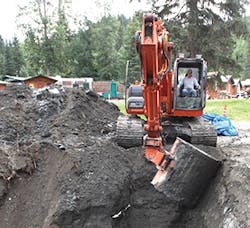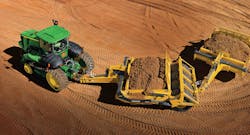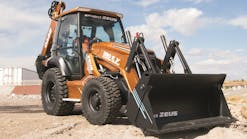If you think about the equipment and skillsets your company already has, it makes perfect sense. No matter if you own the smallest of skid-steers, or the largest of excavators, you’re leaving money on the table if you’re not offering demolition services to your customers. So let’s take a look at some of the latest excavator attachments for demolition in this growing product category, and see how they can double and triple your productivity.
Since we mentioned skid-steers, and of course, they’re one of the most common assets in a contractors equipment arsenal, we’ll start with some perspective from Katie Althoff, an attachment specialist at Bobcat Co., Fargo, ND. Althoff notes that breakers are one of the most popular attachments and Bobcat’s products attach easily to their line of excavators and loaders. “Our breakers install in five minutes or less and they’re easily switched over to an excavator, so you have a lot of versatility. And they are great for breaking up an area where you need a little more precision, such as a small sidewalk, or a road repair where you just need to run a sewer system or something.”
Another excavator attachment for demolition that performs a similar function is the drop hammer, a large style of breaker that lifts a free falling tool. Drop hammers are useful for flat work such as a parking lots, driveways, and large concrete slabs. It’s not as precise as a breaker, but it’s efficient for large areas such as concrete pads, because it works very quickly and it fractures the concrete and subbase. Breakers and drop hammers are categorized by the foot-pound or joule of impact energy.
When you’re breaking up concrete, it can create plenty of debris and rebar. Those materials can damage a machine’s undercarriage, so Althoff recommends some preventative measures. “It’s very nice to have an excavator with a grapple to go in and clean up the hazardous materials. We have a three-tine grapple on our excavator, and with a clamp you can pin it up and continue to use your bucket, so if you need to dig and use the clamp again, this offers a little more versatility. For demolition projects, they’re great because they don’t pick up things like sand and aggregate-sized sub-base materials. For road construction, demolition crews often recycle a lot of the asphalt and we have a sweeper with a bucket on the inside of it so it’s a broom and a dustpan sweeping up and collecting it, and putting the asphalt shavings into a pile and so they can be recycled.”
Bobcat offers planer attachments that are typically used on asphalt, but they can be used on concrete, and for milling. If you’re taking off a layer of asphalt, a planer will scarify the asphalt, so the new asphalt sticks.
How about a heavy-duty ripper for your skid-steer? These brutes are designed for powerful ripping in applications with caliche, frost, or rock. For example, Paladin Attachments, Dexter, MI, makes rippers that are compatible with most pin-grabbing couplers. It’s available as a pin-on or quick hitch attachment. Paladin also makes the FFC Concrete Claw, designed for removing concrete sidewalks and driveways or on any construction site. It can also be used for shrub and stump removal.
The value of excavator attachments for demolition have also been recognized by Hyundai Construction Equipment, Norcross, GA. The manufacturer of earthmoving and material handling equipment recently introduced its first attachment product line to the North American market. Not surprisingly, the line includes 14 models of hydraulic breakers, offering chisel diameters from 1.6–7.9 inches. Operating weights range from 271–12,401 pounds and overall lengths range from 44.4–159.8 inches. The breakers have four chisel options—moil, wedge, blunt, or conical, and are designed for a wide range of demolition applications.
For efficiency, an anti-blank firing (ABF) system prevents the breaker from continuing to strike once material has been demolished, and comes standard on the HDB50–HDB800 models. This system helps protect the chisel pins, tie bolts, and front heads from blank firing and increases theservice life of all components. On the HDB600 and HDB800 models, an energy regeneration valve captures upward flow energy after the piston hits the chisel and retracts back up the cylinder. The technique harnesses up to 15% of the energy to be re-applied on the flow energy back down. This feature increases blow speed without the need for additional flow, resulting in higher production rates.








